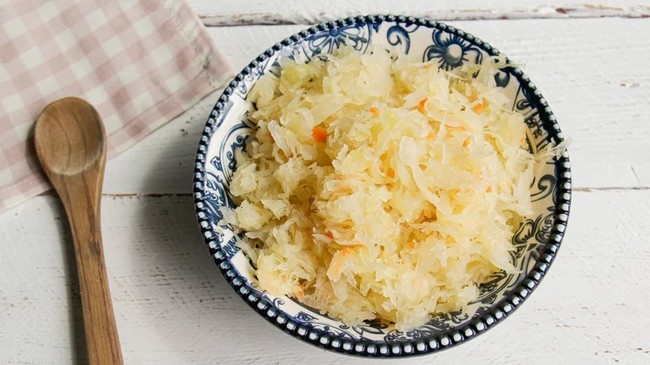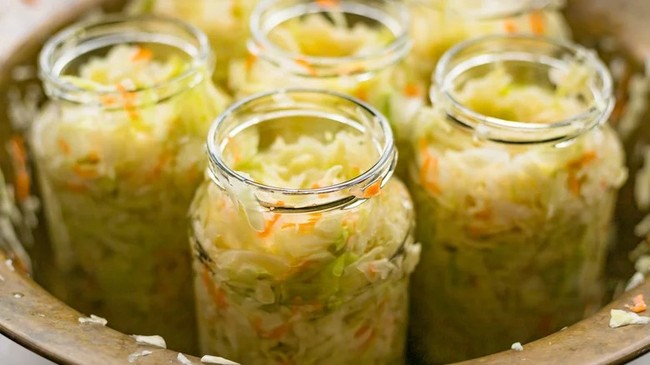✕



✕

Tag:sauerkraut tips 2025-01-09 11:50

Kinga Krzeminska/Getty Images
Sauerkraut is a traditional fermented cabbage dish, beloved for its tangy flavor and rich nutritional profile. Packed with probiotics, vitamin C, and fiber, it supports gut health and strengthens the immune system. With a history that stretches back over 2,000 years to ancient China, sauerkraut (which means "sour cabbage" in German) is often enjoyed as a side dish, condiment, or even a topping for hot dogs and sandwiches.
Today, sauerkraut continues to delight palates and inspire dishes, from Reuben sandwiches to soups and grain bowls. You can even use its leftover juice in salad dressings or as a tangy health shot. Its shelf life varies, depending on your preferred storage method and whether it's pasteurized or unpasteurized. When unopened, either version of store-bought sauerkraut lasts until its best-by date.
Unpasteurized sauerkraut is raw and contains live good gut bacteria. It's typically found in the refrigerated section of grocery stores and continues to ferment over time. When opened, it boasts quite a lengthy shelf-life, lasting four to six months when stored in a cool place from around 60 to 75 degrees Fahrenheit. Pasteurized sauerkraut, on the other hand, is heat-treated to kill bacteria (including probiotics) and can be kept at room temperature while unopened since its acidic nature prevents the growth of harmful bacteria. Once opened, it should be refrigerated and consumed within three to four weeks for optimal freshness. Homemade sauerkraut can last two weeks in the fridge after it's opened.
How to extend sauerkraut's shelf life

Евгения Матвеец/Getty Images
There are a few methods to preserve sauerkraut, the most common one being refrigeration. Always keep it in an airtight container in the colder areas of your fridge, ensuring it's submerged in brine. Refrigeration slows fermentation in unpasteurized sauerkraut and prevents spoilage in pasteurized versions. Avoid introducing contaminants with dirty utensils, which can lead to mold or unpleasant odors.
Other methods of preservation include canning and freezing. Canning sauerkraut can significantly extend its shelf life and prevent rot and contamination. To try this technique, sterilize the jars, pack them with sauerkraut and vinegar, leaving two inches of headspace in the can, and process in a boiling water bath. Properly canned sauerkraut can last up to three years in a cool, dark pantry away from UV light and eight months in the fridge. Alternatively, you can freeze unopened, freezer-friendly sauerkraut in its original packaging for eight months to a year — although doing so may result in a loss of flavor, texture, and probiotic benefits. To freeze opened sauerkraut, place individual portions on a cookie sheet in the freezer for about four hours and then transfer to an airtight freezer-safe bag or container.
Beef Isn't The Only Meat Used To Make Birria Tacos
Here's How Many Layers You Should Have In Your Lasagna
Marinades Are Great For Tenderizing And Flavoring Meat — But There's A Catch
Dish Too Spicy? Cool It Down With An Ingredient Already In Your Fridge
About Us Terms of Service Privacy Policy Contact Us
Hotline(+86)17301604571
 Enterprise WeChat
Enterprise WeChat
for Client Service
 EZBuy
EZBuy
WeChat APP
Sinoexpo Digital Platform
Shanghai Sinoexpo Informa Markets International Exhibition Co., Ltd. All rights reserved
沪ICP备05034851号-77
 沪公网安备31010402000543号
沪公网安备31010402000543号